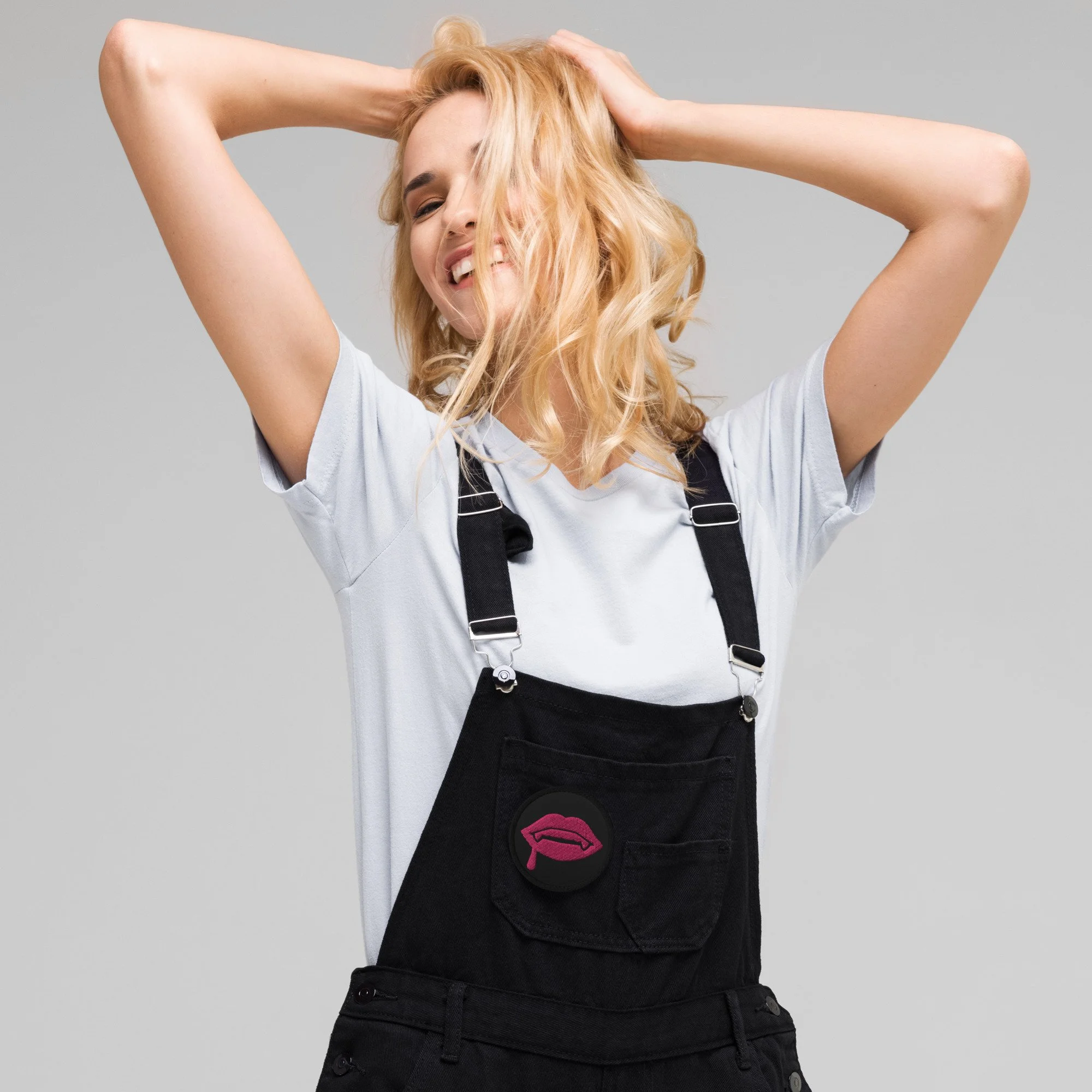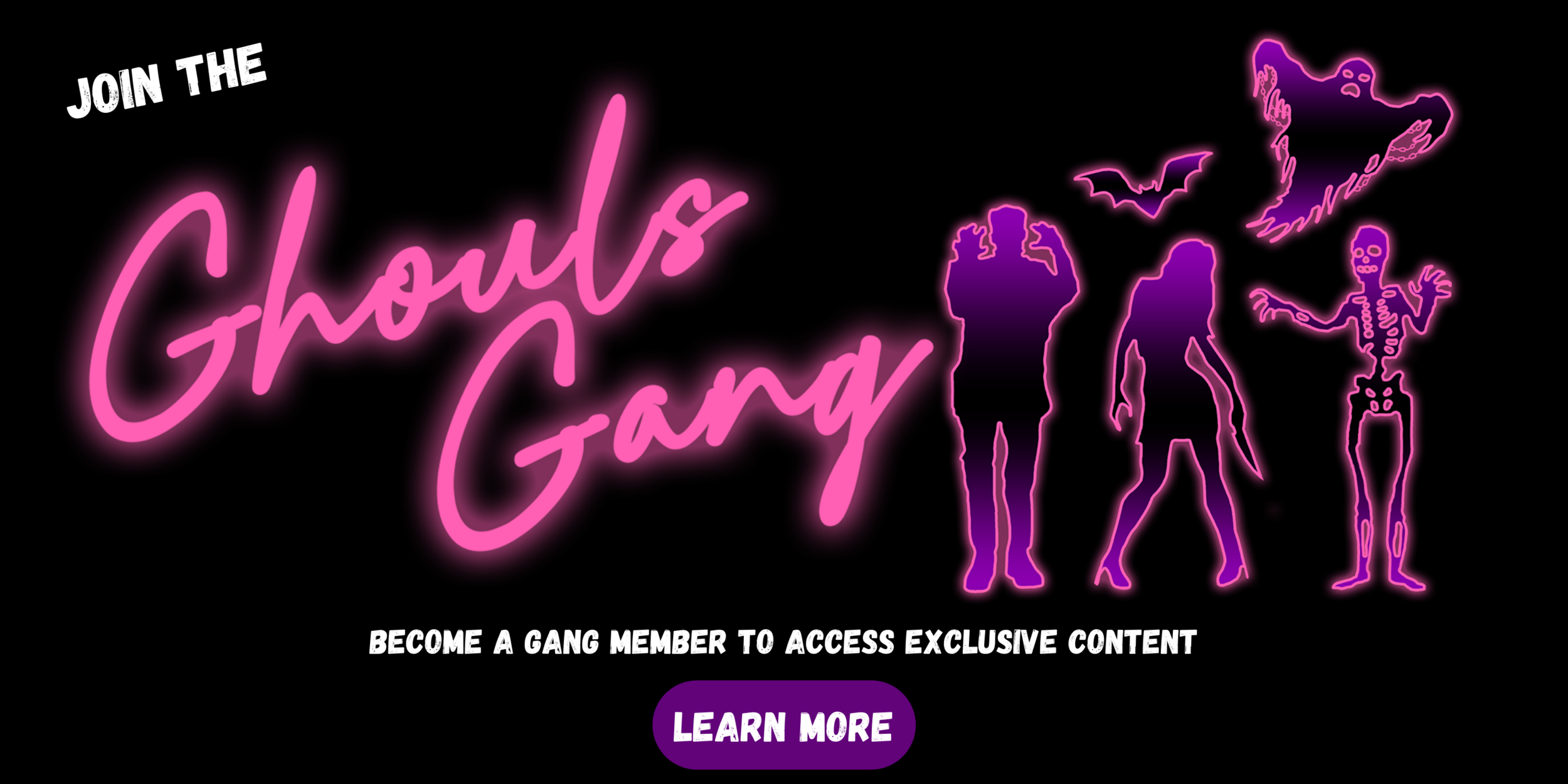[Editorial] From The Old Dark House to The Feast: 9 Moments of Wales in Horror
To celebrate the release of Welsh-language horror The Feast being released into cinemas on August 19th Ghouls have kindly allowed me to discuss some moments of Wales featuring in the horror genre that you may not expect.
For the most part, these will be just small moments in films, leaving out some feature genre and genre-adjacent, specifically Welsh titles like Y Llyfrgell/The Library Suicides (2016), Yr Ymadawiad / The Passing (2016) and more recently, The Toll (2021). An exhaustive list would be impossible, so here are a few of my favourites. Please note: clips or entries on this list may contain spoilers for the films, so if you haven’t seen a title just skip and then come back after watching.
House of the Long Shadows (1983)
This murder-mystery curiosity is probably more well-known for being one of few films to feature Vincent Price, Peter Cushing and Christopher Lee sharing a scene together. As an aside, this clip of Price and Lee interacting is an absolute treasure.
When visitors to the titular Old Dark House (1932) are greeted with the groaning of Boris Karloff’s Morgan, one remarks that ‘even Welsh ought not to sound like that’. This is, unfortunately, a recurring theme in the representation of Wales and the people in it. Nevertheless, that Wales turns up in an early horror queer classic is still worth mentioning. It also sets the template for House of the Long Shadows. The representation of Wales is not exactly enlightening with made-up place names like Bllyddpaetwr and discussions of the Welsh being terribly nationalistic, prompting the American visitor to claim he’ll wear a leak to show he is ‘a friend’. However, my favourite element here is the tourist advert for Aberystwyth seen on the railway station wall, given that Aberystwyth is now home to the Abertoir Horror Festival, bringing the best of new and classic genre features to Wales. Better yet, the festival holds claim to Vincent Price as Official Festival Patron "Saint". Rest assured, you’ll experience a warmer welcome there than this film suggests.
My Little Eye (2002)
Perhaps a more tenuous link for this entry as it doesn’t feature in the film itself, but I will never miss an opportunity to mention underseen gem My Little Eye. The film focuses on five strangers brought to spend six months in an isolated mansion to win one million dollars. The catch is, they will be constantly surveilled by cameras all around the property. It is a great example of a claustrophobic chiller with Welsh director Marc Evans (more recently helming the likes of Hinterland, The Pembrokeshire Murders and Manhunt) showing a great instinct for both slow building tension and heart-stopping moments of horror.
Evil Dead (2013)
The opening scene of Fede Alvarez’s Evil Dead remake features a woman being pursued through the woods by two men. She is apprehended and a cloth placed over her head and wakes up shortly after, tied to a post with people surrounding her. An older woman consults a book, speaking a different language, which just so happens to be Welsh. It isn’t clear why Welsh was used in this scene (all other performers have American accents so it doesn’t seem to be set there) but if the ability to tackle Deadites doesn’t get you onto Duolingo, I’m not sure what will!
You can watch the full scene on YouTube.
The Lighthouse (2016)
It is a shame that Robert Eggers’ The Lighthouse (2019) has largely overshadowed this version. More explicitly based on the Smalls Island incident in 1801 than the later film, this is a far more sober and sombre telling with considerably less meme potential, but is packed with themes and moments that really linger. Religion, guilt and machismo are all left to brew with Thomas Griffiths (Mark Lewis Jones) and Thomas Howell (Michael Jibson) trapped within the structure. Director Chris Crow makes the most of such a small space, delivering on claustrophobic scares that wouldn’t feel out of place in an MR James adaptation. Mark Lewis Jones is surely Welsh national treasure material by now and frequent Chris Crow collaborator and co-writer Michael Jibson is more than up for the challenge of matching his intensity. The mix makes for a compelling and scary take on a story of isolation that continues to compel.
A Dark Song (2017)
A Dark Song is one of those films I will always want to discuss. A potent exploration of grief, regret and control with performers Steve Oram and Catherine Walker putting on an absolute masterclass. The way the film handles ritual is fascinating, with its origins in Aleister Crowley (a figure connected to Wales through a series of mountaineering challenges he undertook) practices. This is, technically an Irish-Welsh co-production, as evidenced by fellow Ghoul Ygraine Hackett-Cantabrana including it on her list of Irish horror films. With Irish and Welsh bodies sharing funding responsibilities and director Liam Gavin’s own background, it feels only right to feature the film on both an Irish and Welsh list. Despite being filmed in Ireland, the house in the film is set in North Wales, again furthering that connection between Wales and big, dark houses that are probably best avoided. In short, add A Dark Song to your watchlist immediately, you won’t regret it.
Prevenge (2017)
Although Alice Lowe’s brilliant revenge horror Prevenge never openly names its location, those viewers who have spent time in Cardiff will be able to spot numerous familiar sights throughout the runtime. It is Ruth’s (Alice Lowe) determined walk through Cardiff, especially through party goers on Queen Street during Halloween night that provides some of the film’s most evocative imagery, including her encounter in an underpass with the man in a skeleton costume. That this was apparently an unplanned moment, born of encountering someone on their way to a party makes it all the more special. With much of a focus on Wales being rural and isolated it is great to see something capture a modern, vibrant city.
Saint Maud (2020)
Note: a major spoiler warning for Saint Maud in this next section.
Maud’s (Morfydd Clark) crucial communication with the entity she believes to be guiding her on her religious quest takes place in Welsh. While not originally intended, director Rose Glass often heard Clark conversing with her parents in Welsh and asked her to provide the altered voice as part of the film. The use of the language is integral to the plot and also suggests another layer to Maud’s slippery backstory and development. Given the way the film ends, it is unlikely to be added to any Welsh tourism adverts, but it is still interesting to see the language used in this way.
Censor (2021)
Censor made a real splash in the horror scene throughout 2021 with Welsh director Prano Bailey-Bond providing a captivating, pleasingly messy portrait of Enid (Niamh Algar) a film censor battling her own personal demons as well as the reception to a new ‘video nasty’. While the characters within the film are English and the film is set in England, Bailey-Bond’s own interest in that period of time comes from her own consumption of those films within Wales. So much of the attention on the moral panics around Video Nasties is often focused on England, when the impact was felt much more broadly and has clearly shaped the tastes and interests of up and coming filmmakers.
Barbarians (2021)
Another on the list that doesn’t call attention to its Welsh roots is recent thriller, Barbarians. The advert that starts the film refers to the Gaeta property development, borrowing the Gaelic word for Gateway. Borrowing becomes a key theme within the film, as does that old familiar toxic masculinity. Featuring Welsh actors Tom Cullen and Iwan Rheon in leading roles, the pair come to present two distinct types of masculinity. Cullen’s social-media obsessed Lucas, overbearing and committed to ‘banter’ and Rheon’s quieter, but just as troubled Adam both dominate in different ways. Whether intentional or not, their nationality within the confines of the film does lend even further weight to the themes being discussed and the construction of British masculinities.
These are just a few of my personal choices with an attempt to bridge the gap between older representations and contemporary depictions of Wales, both in front of and behind the camera. If I’ve missed your favourite, add it to the conversation!










![[Editorial] Soho Horror Film Festival: Interview with Aimee Kuge on Cannibal Mukbang](https://images.squarespace-cdn.com/content/v1/5fe76a518d20536a3fbd7246/1701808004722-9M8SZ2UXY52QBQBR4NTI/img20230818_15150780.JPG)
![[Editorial] 9 Horror Nintendo Switch Games To Play](https://images.squarespace-cdn.com/content/v1/5fe76a518d20536a3fbd7246/1697214470057-3XZXX8N4LYIMDFWS6Z3P/Screenshot+2023-10-13+at+17.20.13.png)
![[Mother of Fears] Mothering in Silence in A Quiet Place (2018)](https://images.squarespace-cdn.com/content/v1/5fe76a518d20536a3fbd7246/1696445921315-HZJ2DZYQIH6VVWXBO2YL/Screenshot+2023-10-04+at+19.52.29.png)
![[Event Review] Highlights from Mayhem Film Festival 2023](https://images.squarespace-cdn.com/content/v1/5fe76a518d20536a3fbd7246/1697624582491-MPT2VB9RRGU6OG7L6UKL/Mayhem+2023.jpg)
![[Editorial] Mayhem Festival: Interview with Thomas Sainsbury on Loop Track (2023)](https://images.squarespace-cdn.com/content/v1/5fe76a518d20536a3fbd7246/1697186472899-WC4RR0TW7L7LMFEBGPA2/Tom+Sainsbury.jpg)
![[Editorial] Keeping Odd Hours: A Retrospective on Near Dark (1987)](https://images.squarespace-cdn.com/content/v1/5fe76a518d20536a3fbd7246/1696445070868-HU9YIL3QPBCL1GW47R3Z/Screenshot+2023-10-04+at+19.36.53.png)
![[Editorial] 5 Female Focused Horror Book Recommendations](https://images.squarespace-cdn.com/content/v1/5fe76a518d20536a3fbd7246/1696441981361-52EQCTJ7AT2QF1927GM7/919xtm6d3fL._AC_UF894%2C1000_QL80_.jpg)
![[Editorial] What to Watch at This Year's Cine-Excess International Film Festival 2023](https://images.squarespace-cdn.com/content/v1/5fe76a518d20536a3fbd7246/1697213510960-REV43FEOZITBD2W8ZPEE/Screenshot+2023-10-13+at+17.01.15.png)
![[Editorial] Cherish Your Life: Comfort in the SAW Franchise Throughout and Beyond the COVID-19 Pandemic](https://images.squarespace-cdn.com/content/v1/5fe76a518d20536a3fbd7246/1695487675334-MYPCPYYZQZDCT548N8DI/Sc6XRxgSqnMEq54CwqjBD5.jpg)















![[Editorial] 10 Films & Events to Catch at Soho Horror Film Fest 2023](https://images.squarespace-cdn.com/content/v1/5fe76a518d20536a3fbd7246/1700819417135-299R7L4P0B676AD3RO1X/Screenshot+2023-11-24+at+09.41.52.png)
![[Editorial] 9 Best Slashers Released Within 10 Years of Scream (1996)](https://images.squarespace-cdn.com/content/v1/5fe76a518d20536a3fbd7246/1695478839037-LOFHGVM3H6BMSZW7G83M/Screenshot+2023-09-23+at+15.15.11.png)
![[Mother of Fears] Mother Vs. Monster in Silent Hill (2006)](https://images.squarespace-cdn.com/content/v1/5fe76a518d20536a3fbd7246/1695485781119-H6GNP0G3J2TLPAOIABV7/Screenshot+2023-09-23+at+17.11.56.png)
![[Editorial] 9 Terrifying Cerebral Visions in Horror Movies](https://images.squarespace-cdn.com/content/v1/5fe76a518d20536a3fbd7246/1693509801235-X23OL50T1DVGECH0ZJK2/MV5BMjQ0MTg2MjQ4MV5BMl5BanBnXkFtZTgwMTU3NDgxMTI%40._V1_.jpg)
![[Mother of Fears] I Don’t Wanna Be Buried in a Pet Sematary (1989) and (2019)](https://images.squarespace-cdn.com/content/v1/5fe76a518d20536a3fbd7246/1691328766069-QFNAVJOMFZVZ5CLU1RWM/Screenshot+2023-08-06+at+14.23.13.png)
![[Mother of Fears] How I Love to Love Nadine in The Stand (2020)](https://images.squarespace-cdn.com/content/v1/5fe76a518d20536a3fbd7246/1690213172707-TKM9MZXK02EVCIX30M1V/Screenshot+2023-07-24+at+16.29.11.png)
![[Editorial] 11 Best Werewolf Transformations in Horror Films](https://images.squarespace-cdn.com/content/v1/5fe76a518d20536a3fbd7246/1689240234098-HUPQC6L57AAHFJNT8FTE/Screenshot+2023-07-13+at+10.09.13.png)

Now it’s time for Soho’s main 2023 event, which is presented over two weekends: a live film festival at the Whirled Cinema in Brixton, London, and an online festival a week later. Both have very rich and varied programmes (with no overlap this year), with something for every horror fan.